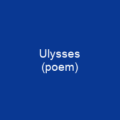Sair Tjerita Siti Akbari: A Tale of Disguise and Destiny
Imagine a world where a woman’s courage knows no bounds, where she dons the mantle of a man to fight for what is right. This is the story of Sair Tjerita Siti Akbari, a 1884 Malay-language poem by Lie Kim Hok that has captivated readers for over a century.
Who is Siti Akbari, and why does her tale resonate so deeply? She is the embodiment of resilience and determination, a woman who disguises herself as a man to free her husband from the clutches of the Sultan of Hindustan. Her journey is not just one of liberation but also of self-discovery and the blending of cultures.
The Influence of European Literature
How did Lie Kim Hok’s background shape the creation of this epic poem? Influenced by Dutch missionaries and European literature, Lie Kim Hok wove a narrative that was both innovative and traditional. The story is based on an earlier tale, Sjair Abdoel Moeloek, which may have been translated from Malay oral traditions or Javanese wayang puppets.
The work took several years to complete, with some sources suggesting it may have taken 7 years. This dedication speaks volumes about the depth and complexity of Lie’s vision for Sair Tjerita Siti Akbari.
A Heroine’s Journey
What makes Siti Akbari’s story so compelling? The tale follows a hero or heroine who passes herself as a man and does war in a chaotic kingdom. Lie deviated from established traditions by mixing European and native influences, creating a unique form that blends the best of both worlds.
The story consists of 1,594 monorhymic quatrains with two couplets per line, forming a sort of prose poem with an unnamed narrator. This structure allows for a fluid narrative that is both poetic and powerful, making it easy to lose oneself in the tale.
Breaking Boundaries
How did Lie Kim Hok’s work challenge the norms of his time? The literary critic G. Koster notes that the work was limited by formulaic Pandji romances and syair poems common in Malay literature at the time. However, Lie’s deviation from established traditions created a unique form that blends European and native influences.
The poem highlights tensions between European culture and adat, or tradition, through Siti Akbari’s character. She fights for her husband but ultimately returns to a polygamous relationship, while Safi Oedin dies due to refusing local customs. The story promotes awareness of adat and traditional value systems.
A Literary Gem
Why is Sair Tjerita Siti Akbari considered one of Lie’s best works? The poem was first published in four volumes in 1884 and received the most reprints among Lie’s publications. It was well-received by readers, with many considering it one of Lie’s best works. Nio Joe Lan described Siti Akbari as the ‘jewel of Chinese Malay poetry.’
The story was adapted for stage performances by various troupes and remained popular until the late 1930s. Lie continued to experiment with European-style prose, publishing novels such as Tjhit Liap Seng (Seven Stars), which is considered the first Chinese Malay novel.
Critics named Lie the ‘father of Chinese Malay literature’ for his contributions. However, due to marginalization by the Dutch colonial government, little scholarly analysis has been done on Sair Tjerita Siti Akbari. This is a testament to the enduring power and relevance of this work.
The similarities between Sjair Abdoel Moeloek and Sair Tjerita Siti Akbari were discovered later, leading to criticism that Lie’s works were adaptations rather than originals. The stories share similar plot elements but differ in style and details.
In conclusion, Sair Tjerita Siti Akbari is a timeless tale of courage, love, and cultural fusion. It challenges the norms of its time while offering a unique blend of Eastern and Western influences. This poem stands as a beacon of creativity and resilience in the face of adversity.
You want to know more about Sair Tjerita Siti Akbari?
This page is based on the article Sair Tjerita Siti Akbari published in Wikipedia (retrieved on December 1, 2024) and was automatically summarized using artificial intelligence.








